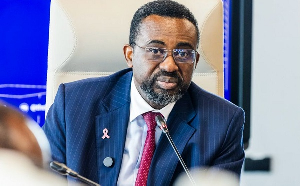The Wa East District has recorded an overall performance score of 40 percent, placing it at the bottom of the 2014 District League Table (DLT) that assessed the level of development across all 11 districts of the Upper West Region.
The district had low percentage scores in indicators such as police coverage five percent, skilled delivery 21 percent and rural water coverage 49 percent.
The district however had good scores in others sectors such as the Functional Organizational Assessment Tools (FOAT) 100 percent and 66 percent Basic Education Certificate Examination (BECE) pass rate during the year under review.
These are the scores that contributed to the overall score of 40 percent ranking the district bottom among all the 11 districts in the region in terms of their level of development.
Mavis Dome, a Research Officer at the Center for Democratic Governance (CDD – Ghana) who presented the Upper West Regional Analysis of the DLT at a Regional dissemination forum, said Wa Municipal came top among all the 11 districts with a percentage score of 67 percent.
She said districts that did better included Wa Municipal, Sissala East, Nadowli-Kaleo, Lawra and Jirapa Districts.
She explained that these districts had scores between two percent and nine percent percentage points above the national average of 58 percent and between four percent and 11 percent percentage points above the regional average of 56 percent.
On the other hand Nandom, Lambussie-Karni, Daffiama-Bussie, Issa and Wa East districts are at the bottom of the league table in terms of ranks.
These bottom districts have scores between one percent and 18 percent percentage points below the national average of 58 percent and between five percent and 16 percent percentage points below the regional average of 56 percent.
Districts’ scores on various indicators such as education, health, water, security, governance and sanitation were what contributed to the average index used in raking the districts.
Generally, the Upper West Region scored 56 percent for the regional average scores nationwide placing it 7th out of the 10 regions in terms of development levels.
Mr. Awal Mohammed, also a Research Officer at CDD-Ghana explained that the DLT was a simple tool for raking progress toward delivering wellbeing and key basic services in each of Ghana’s 216 districts.
He said it aimed at complementing efforts by the Government of Ghana and non-state actors to scale up social accountability for development across all districts so as to improve state responsiveness in public goods and service delivery.
The ultimate objective of the DLT is to increase social accountability in Ghana that will lead to improved development for the country’s population, Mr. Mohammed stated.
The CDD-Ghana Research Officer said the DLT did not intend to ‘name and shame’ those districts that were facing challenges or to punish poor performing ones but rather to help highlight inequities in local development and encourage stakeholders to give more support where needed.
The DLT is an initiative of UNICEF Ghana and CDD-Ghana with the Ministry of Local Government and Rural Development, Metropolitan, Municipal and District Assemblies, the Ministry of Education, Ghana Police Service, Ghana Health Service, Ghana Statistical Service, Ghana Water Company and the Community Water and Sanitation Agency serving as key collaborators.
Regional News of Saturday, 21 February 2015
Source: GNA












